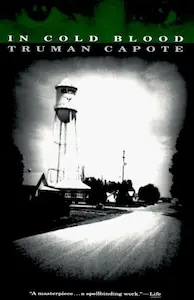In Cold Blood - Summary
Truman Capote

Introduction
“In Cold Blood” is a non-fiction novel written by Truman Capote and published in 1966. It tells the chilling and captivating true story of the brutal murder of the Clutter family in Holcomb, Kansas, in 1959. Capote extensively researched the case, conducting interviews with the murderers, investigating the crime scene, and attending the trial. This book summary will delve into the key elements of “In Cold Blood,” providing a comprehensive overview of its plot, characters, and themes.
The Clutter Family Murder
The book opens with a vivid description of the Clutter family, a well-respected and prosperous family living in a small town. Herbert Clutter, the patriarch, is a well-liked farmer, while his wife, Bonnie, is a homemaker. Their children, Nancy and Kenyon, are both popular and successful in their respective fields. However, their peaceful lives are shattered when two ex-convicts, Perry Smith and Dick Hickock, invade their home with the intention of robbing them.
The Investigation
Capote meticulously details the investigation that follows the Clutter family’s murder. He explores the efforts of the local law enforcement, led by Alvin Dewey, to uncover the truth behind the crime. Through interviews with the investigators, Capote reveals the challenges they faced in piecing together the events of that fateful night and apprehending the culprits.
Perry Smith and Dick Hickock
One of the most compelling aspects of “In Cold Blood” is Capote’s in-depth exploration of the two murderers, Perry Smith and Dick Hickock. Capote delves into their troubled pasts, providing readers with a glimpse into the factors that shaped their characters and ultimately led them to commit such a heinous crime. Perry, in particular, emerges as a complex and sympathetic character, haunted by his traumatic childhood and struggling with feelings of inadequacy.
The Trial
The trial of Perry Smith and Dick Hickock forms a significant part of the narrative. Capote attended the trial and provides a detailed account of the courtroom proceedings, the arguments presented by the prosecution and defense, and the reactions of the Clutter family’s loved ones. Through his vivid descriptions, Capote effectively conveys the tension and drama surrounding the trial, leaving readers on the edge of their seats.
Themes of Alienation and Isolation
Throughout “In Cold Blood,” Capote explores themes of alienation and isolation. Perry Smith, in particular, embodies these themes, as he feels disconnected from society and struggles to form meaningful connections with others. Capote’s portrayal of Perry’s loneliness and longing for acceptance adds a layer of depth to the narrative, prompting readers to reflect on the consequences of social isolation.
The Power of Narrative
Capote’s masterful storytelling is another highlight of “In Cold Blood.” By blending elements of fiction and non-fiction, he creates a narrative that is both informative and engaging. Capote’s meticulous attention to detail and his ability to capture the emotions and motivations of the characters make the story come alive, drawing readers into the harrowing events surrounding the Clutter family’s murder.
The Ethics of True Crime Writing
The publication of “In Cold Blood” sparked a significant debate about the ethics of true crime writing. Capote’s intimate knowledge of the case and his close relationship with the murderers raised questions about the boundaries between journalism and exploitation. Some critics argued that Capote crossed these boundaries by humanizing the killers and profiting from their story. Others praised his groundbreaking approach to non-fiction storytelling.
Impact and Legacy
“In Cold Blood” had a profound impact on the literary world and true crime genre. Capote’s innovative narrative style, blending fact and fiction, paved the way for future works in the genre, such as “Helter Skelter” by Vincent Bugliosi. The book’s success also solidified Capote’s reputation as a literary icon, showcasing his ability to captivate readers with his storytelling prowess.
Conclusion
“In Cold Blood” remains a timeless classic, captivating readers with its chilling true story, vivid characters, and thought-provoking themes. Capote’s meticulous research and compelling narrative style make this book a must-read for fans of true crime and literary non-fiction. By delving into the depths of human nature and exploring the consequences of isolation, Capote creates a haunting tale that lingers in the minds of readers long after they turn the final page.